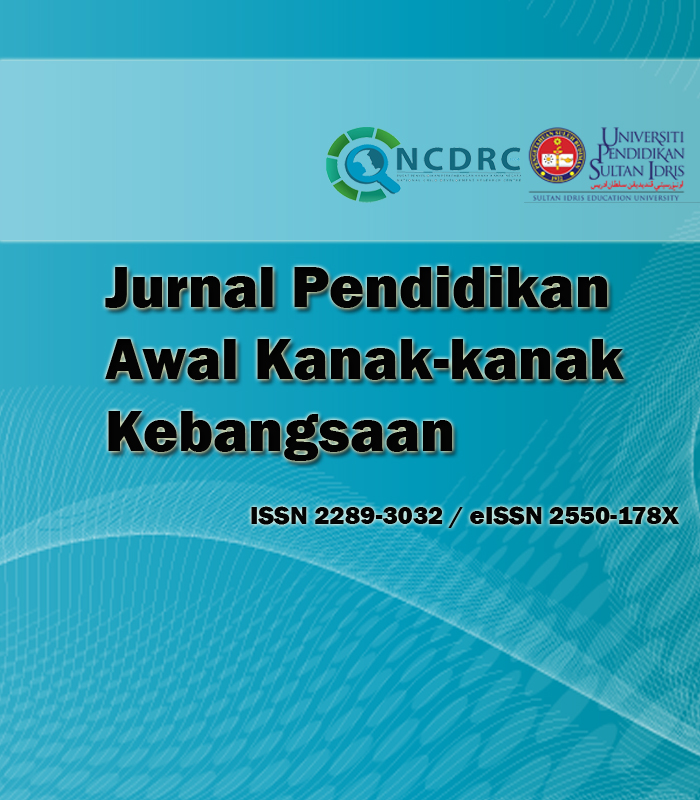Issues and recommendations of the use of smart phones for the emotional well-being of children with learning disabilities: a parent's viewpoint
DOI:
https://doi.org/10.37134/jpak.vol12.2.2.2023Keywords:
parents, emotional well being, children with learning disabilities, smart phoneAbstract
In line with developments in Information and Communication Technology (ICT), smartphones are essential electronic devices in everyday life. However, parents' views on the use of smartphones for the emotional well-being of children, especially children with Learning Disabilities (LD), are still understudied. To that, this concept paper aims to detail the issue of smartphone use for the emotional well-being of LD children, especially when they surf the internet from a parent's point of view. Proposed solutions to the problems identified using smartphones are also carefully discussed in this concept paper based on past studies.
Downloads
References
Arba’ie Sujud & Nik Rafidah Nik Muhamad Affendi, (2011) Pembentukan emosi kanak- kanak melalui bahan bacaan sastera. Jurnal Pengajian Melayu, 22, 66-89.
Glumbić, N., Brojčin, B., Žunić-Pavlović, V., & Đorđević, M. (2020). Problematic mobile phone use among adolescents with mild intellectual disability. Psihologija, 53(4), 359-376.
Hamdan, H. F. Persepsi ibu bapa terhadap penggunaan telefon bimbit kepada emosi Murid Masalah Pembelajaran di Sekolah Menengah Kebangsaan Bandar Puncak Jalil, Selangor. [Unpublished doctoral dissertation]. Universiti Pendidikan Sultan Idris.
Husin, F. N. C., Yasin, M. H. M., & Surat, S. Gaya Keibubapaan Dan Ketagihan Penggunaan Peranti Teknologi Digital Kanak-Kanak Bermasalah Pembelajaran. Jurnal Penyelidikan Pendidikan dan Teknologi Malaysia (JPPTM). 1 (1), 43-52.
Jabatan Kebajikan Masyarakat. Laporan Statistik 2021. OMR Press Sdn. Berhad. Selangor.
Kanmani, A.S., Bhavani, U., & Maragatham, R.S. (2017). NOMOFOBIA – An insight into its psychological aspects in India. The International Journal of Indian Psychology, 4(2), 5-15.
Mat, H., & Zain, A. (2022). The effects of gadget use on children during teaching and learning in new norms. Jurnal Pendidikan Bitara UPSI, 15, 29-37. https://doi.org/10.37134/bitara.vol15.sp.4.2022.
Nawawi, M. N., & Yasin, M. H. M. (2023). Pengetahuan Guru Pendidikan Khas Sekolah Rendah Dalam Melaksanakan Pentaksiran Berasaskan Sekolah Murid Berkeperluan Pendidikan Khas di Daerah Klang. Jurnal Dunia Pendidikan, 5(2), 26-38.
Pelan Pembangunan Pendidikan Malaysia (PPPM 2013-2025). Kementerian Pendidikan Malaysia.
Rasmitadila, R., Megan Asri, H., & Reza, R. (2022). Teachers' Perceptions of the Role of Universities in Mentoring Programs for Inclusive Elementary Schools: A Case Study in Indonesia. Journal of Education and e-Learning Research, 8(3), 333-339.
Rohayati Junaidi, (2020) Persekitaran yang membentuk modal insan dalam novel kanak-kanak. MANU, 31 (1), 97-119.
Selvam, M. P., & Toran, H. (2021). Persepsi Guru Terhadap Penggunaan Gajet Dan Hubungannya Dengan Perkembangan Murid Autisme Di Sekolah Rendah Daerah Gombak, Selangor [Teachers’perception On Students With Autisms’use Of Gadgets And Its Relationship With Their Development In Primary...]. Global Journal Of Educational Research And Management, 1(2), 115-129.
Shin, T. L., & Ali, M. M. (2020). Penggunaan telefon pintar dan tahap nomofobia dalam kalangan murid berkeperluan khas di sekolah menengah (Smartphone usage and nomofobia level among special needs students in secondary schools). Geografia, 16(4).
Downloads
Published
Issue
Section
License
Copyright (c) 2023 Rohaizat Ibrahim, Fauzah Hanis Hamdan

This work is licensed under a Creative Commons Attribution-NonCommercial-ShareAlike 4.0 International License.





